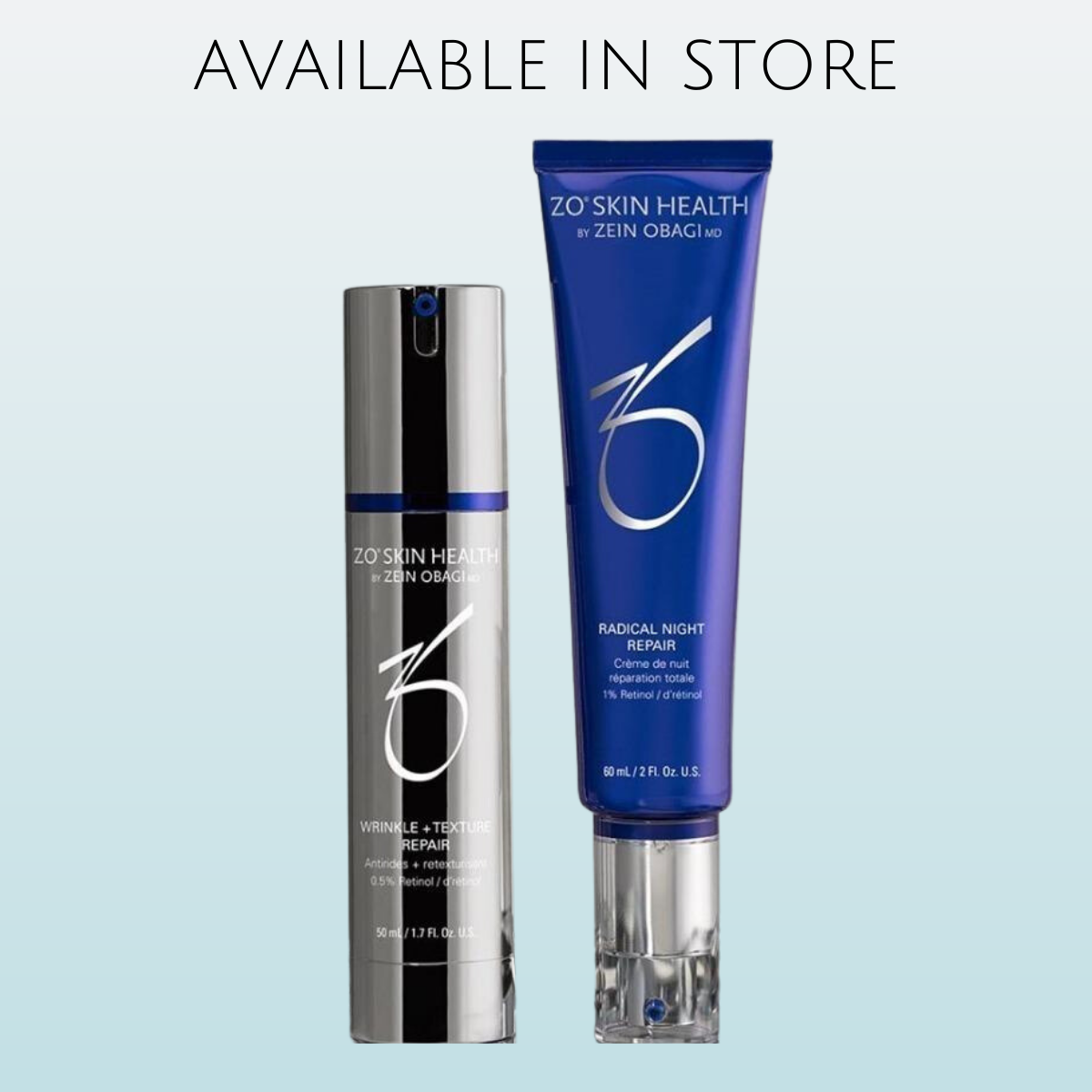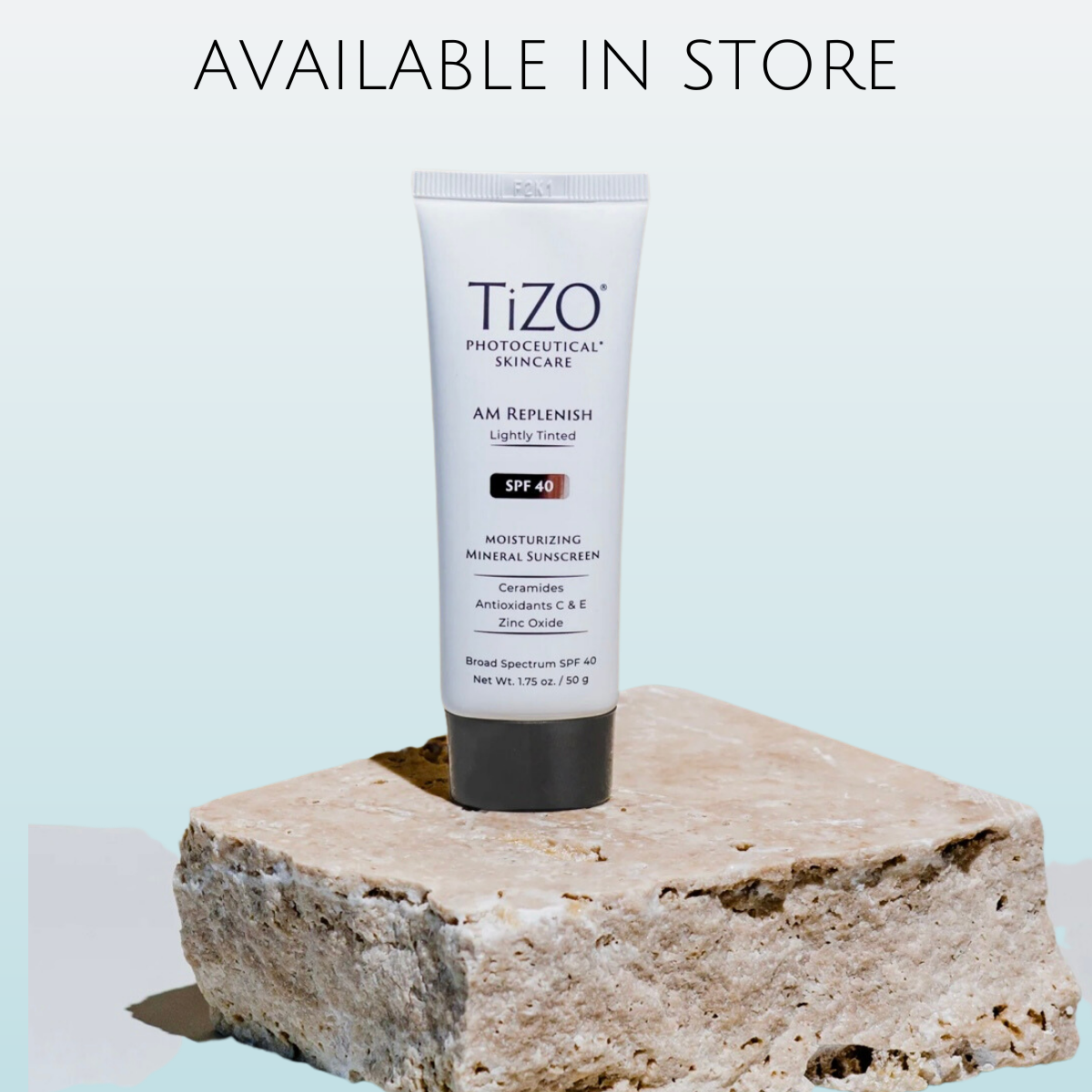At Oakville Medical Aesthetics, we recommend our patients use a broad-spectrum sunscreen 365 days of the year. The best way to protect against skin cancer and preserve the health and texture of your skin is to use sunscreen. Applying sunscreen is a crucial step in any daily skin routine, no matter your skin age, skin tone or type.
There are several types of UV radiation that can damage your skin:
- UVA: UVA rays are primarily responsible for skin aging. There are two types: UVA1 and UVA2.
- UVB: UVB rays are what primarily cause sunburn.
- UVC: UVC rays from the sun don’t reach the earth. However, artificial light sources, like plant growth lamps and disinfectant lamps, do emit UVC radiation.5
Both UVA and UVB rays can be responsible for skin cancer. The best sunscreens provide broad-spectrum protection, which means they block both types.
Mineral vs. Chemical
Mineral and chemical sunscreens work very differently: Mineral sunscreens (also known as physical sunscreens) form a physical barrier to block and reflect UVA and UVB rays, while chemical sunscreens work by absorbing the UV rays. SPF ratings for both mineral and chemical sunscreens reflect only UVB protection.
You can easily tell whether a sunscreen is chemical or mineral by looking at the active ingredients listed on the box; mineral sunscreens will have zinc oxide or titanium dioxide (or both) as the active ingredients. Mineral sunscreens are made of tiny particles of the metals zinc oxide, titanium dioxide, and sometimes iron oxide. These minerals sit on the skin and are not absorbed. Physical (mineral) blockers do not wear off as quickly as chemical blockers. These sunscreens are recommended for those with hyperpigmentation such as melasma as they also protect the skin against the heat by reflecting the damaging wavelengths of the sun.
Chemical sunscreens absorb UV radiation and convert it to heat. While mineral sunscreens sit on top of the skin, chemical sunscreen absorbs into it. Many chemical UV filters block only UVA or UVB rays, which is why chemical sunscreens typically feature multiple active ingredients. The benzophenones (oxybenzone, sulisobenzone, dioxybenzone), menthyl anthranilate, and avobenzone are chemical blockers that protect against both UVA and UVB radiation. Some find chemical sunscreens to be irritating to their skin and or eyes. Some of the chemicals in chemical sunscreens were found in people’s blood at higher amounts than the exposure threshold recommended by the FDA. Oxybenzone is part of a group of chemicals called benzophenones as stated above. Studies have linked benzophenones to issues like thyroid hormone imbalances in humans. A number of animal studies and some small human studies also point to the ingredient as a hormone-disruptor, but experts say that much more research needs to be done before any conclusions can be made.
Understanding SPF
SPF stands for sun protection factor. It represents the amount of exposure to UV radiation it takes to get a sunburn while using the product. A higher SPF means more protection against sunburn. Because UVB rays are responsible for sunburns, SPF usually refers to the amount of UVB, not UVA, protection a product provides. This is why it’s important to look for the words “broad spectrum.
Won’t I get a white cast from Mineral sunscreen?
Not anymore. Our favorite lines out now melt easily into any skin tone without the whitish cast of previous iterations, and they feel silky and luxurious on all skin types. Some of the ones we’re most excited about are tinted and act almost like makeup, incorporating skin-perfecting tech to smooth the appearance of pores, even tone, and soften the look of blemishes. Others are fortified with skincare-boosting antioxidants to protect and improve skin further.
Final Thoughts
Chemical and mineral sunscreens are two slightly different ways of accomplishing the same goal: to protect against skin cancer and aging.
Mineral sunscreen ingredients like zinc oxide and titanium dioxide are considered safe and effective by the FDA.
Chemical sunscreens have also been proven to block UV rays, but some new research is raising alarm about the potential health effects of chemical sunscreen ingredients like oxybenzone and octocrylene. However, experts say more research needs to be done to provide conclusive evidence that using this type of sunscreen can lead to adverse health outcomes.
Dermatologists and researchers agree that the benefits of using sunscreen greatly outweigh any potential risks.
Ultimately, the best sunscreen is the sunscreen you’ll use, depending on your specific skin and lifestyle needs. If you’re particularly concerned about the ingredients in chemical sunscreens or have sensitive skin, it may be best to try a mineral formula.
How to apply sunscreen
Sunscreen can protect your skin against skin cancer and premature aging. However, it is not as effective unless it’s applied correctly. Follow these tips when applying sunscreen:
- Choose a sunscreen that has an SPF of 30 or higher, is water resistant, and provides broad-spectrum coverage, which means it protects you from UVA and UVB rays.
- Apply sunscreen before going outdoors. It takes approximately 15 minutes for your skin to absorb the sunscreen and protect you. If you wait until you are in the sun to apply sunscreen, your skin is unprotected and can burn.
- Use enough sunscreen. Most adults need about 1 ounce — or enough to fill a shot glass — to fully cover their body. Rub the sunscreen thoroughly into your skin.
- Apply sunscreen to all bare skin. Remember your neck, face, ears, tops of your feet and legs. For hard‐to‐reach areas like your back, ask someone to help you or use a spray sunscreen. If you have thinning hair, either apply sunscreen to your scalp or wear a wide‐brimmed hat. To protect your lips, apply a lip balm with SPF.
- To remain protected when outdoors, reapply sunscreen every two hours, or immediately after swimming or sweating. People who get sunburned usually didn’t use enough sunscreen, didn’t reapply it after being in the sun, or used an expired product.
Not just for summer!
Your skin is exposed to the sun’s harmful UV rays every time you go outside, even on cloudy days and in the winter so whether you are on vacation or taking a brisk fall walk in your neighborhood, remember to use sunscreen!





